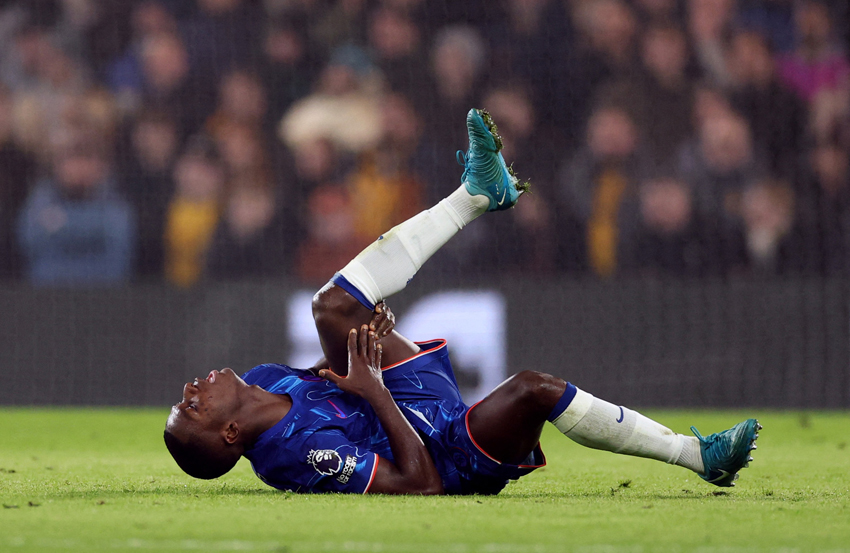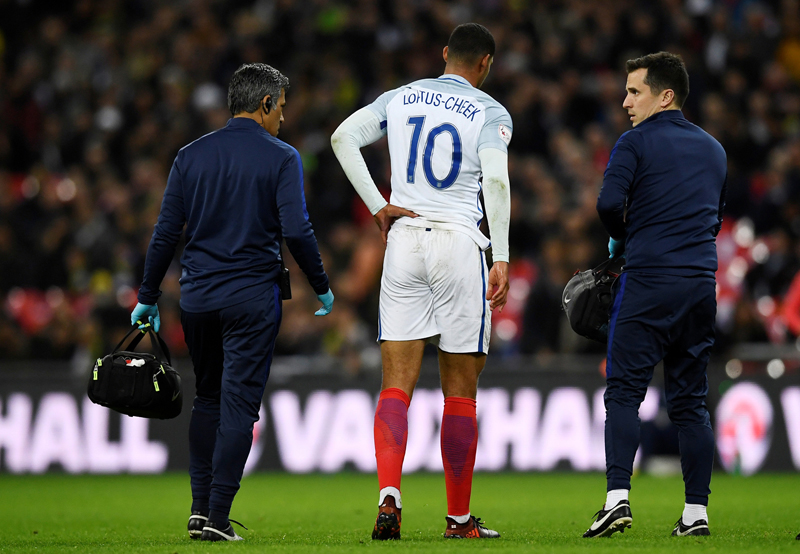Joint manipulation: is it safe?
Joint manipulation for injuries - is it worth the risk?
The popularity of manipulating joints for the treatment of injuries has continued to grow in recent years in line with the spread and growth of the chiropractic, osteopathic and physiotherapy professions in aid of sports injury prevention. But according to Steve Robson, athletes have little to gain and potentially much to lose by joint manipulation
Manipulation defined
Clinically, manipulation is defined as using techniques to force a joint beyond its presumed physiological barrier and up to its anatomical barrier. Essentially these techniques are beyond the conscious control of the patient. In other words, once the manipulation has been initiated it can’t be stopped. Joint manipulation involves sudden, high velocity thrusting type movements that are often accompanied by an audible clicking, cracking or popping sound.
In response to the ever-increasing body of scientific evidence available, some authors have started to question the actions, effectiveness and safety of joint manipulation (1-6). In short, just because a treatment like manipulation has been used and accepted for thousands of years does not necessarily mean it is either safe or effective.
Unfortunately, much anecdotal evidence suggests that many athletes experiencing problems such as pain and/or restricted movement in their back, neck, arms, legs etc are prescribed spinal manipulation on the basis that their problem is being caused by a disc or discs having ‘slipped or moved out of place’. The theory here being that manipulation ‘forces’ the disc back into position and corrects the problem.
However, this is just not true. Modern diagnostic scanning such as magnetic resonance imaging (MRI) and computerised tomography (CT) have demonstrated that prolapsed discs do not revert back to any semblance of their original structure following manipulation. In fact, there’s compelling evidence that intervertebral discs can actually be injured by manipulation procedures – ie the technique prescribed to correct the suspected problem can actually create disc injuries or exacerbate underlying disc injury and/or pain.
Asymmetry, malalignment and movement dysfunction
Athletes seeking treatment are often told that their pain and injury problems are due to spinal, sacroiliac, hip joints etc being malaligned, out of place and/or not moving properly. Most of the examination approaches used to arrive at these diagnoses have originated from the chiropractic and osteopathic professions, often to be adopted with little enquiry by physiotherapists (7).
In this approach, clinical findings of asymmetry (eg one crest of the pelvis higher/lower than the other) and malalignment (eg curvatures of the spine) are claimed to be both a reliable and a valid way to diagnose and treat injuries and illness.
However, reviewing best scientific evidence strongly indicates that these assumptions are deeply flawed. Asymmetry of the body’s structures is very common; many healthy people have one shoulder, shoulder blade, pelvic crest (the list goes on) higher or lower than that on the opposite side and this is quite normal; asymmetry is commonplace and can be due to many factors, including congenital and developmental differences as well as ageing and disease states.
For example, if you are right-handed you will generally use your right upper limb more than your left, especially if you participate regularly in sports such as racquet or field sports. The net result is that, through normal use and training responses, the bones on your dominant side become stronger, with the likes of the clavicle (collar bone) becoming shorter and thicker, thus contributing to the appearance of what can only be described as ‘normal’ developmental shoulder asymmetry (8).
In addition to asymmetry, this approach to treatment utilises motion tests said to detect ‘movement dysfunction’, especially in the spinal and pelvic regions (9-11). Many advocates of manipulation claim that the detection of abnormal ‘dysfunctional’ movement at spinal joints and the sacroiliac and pubic joints of the pelvis is possible by assessing ‘perceived differences’ in the motion of these joints.
However, studies of the spinal and pelvic joints have shown that the patterns of movement at spinal joints in particular are variable and complex, differing greatly between individuals; they are even very erratic within the same individual if the starting posture of movements is subtly altered (12). Unsurprisingly, numerous high quality clinical studies have found that the tests commonly and currently used to diagnose spinal, sacroiliac and pubic joint dysfunction are both scientifically unreliable and invalid (13-15).
Presently there is no evidence to suggest that manipulation (or any other technique) can be administered to treat either asymmetry or movement dysfunction based on these methods of clinical assessment. This system of clinical examination is fundamentally flawed and invalid, indicating that practitioners using these treatment approaches are not treating what they think they are treating.
Acute locked back
One of the popular theories of manipulation postulates that a sudden onset of acute back pain associated with severe restriction of back movement can occur when joint cartilage or the ligament capsule of the joint becomes trapped between the surfaces of the small facet joints that are positioned either side of each vertebra. Manipulation has been thought to simply ‘release’ the trapped structures and correct the problem. However, high resolution CT and MRI imaging has never identified entrapment of either of these structures, and both their presence and amenability to treatment with manipulation is entirely speculative.
Joint ‘popping, clicking and cracking’
Much has been made by manipulators of the popping, clicking or cracking sounds from joints during manipulation; some practitioners maintain that this is the sound of the joint being ‘positionally corrected’ by a bubble of gas said to be spontaneously formed within the joint by manipulation (10). Once again, however, neither CT nor MRI scanning techniques have shown any evidence of gas formation in joints following manipulation.
Chiropractic ‘subluxations’
The chiropractic philosophies of assessment and treatment are based on the belief that joint ‘subluxation’ or ‘positional faults’ occur, particularly at spinal joints, and that this ‘abnormality’ interferes with the body’s health. Furthermore, chiropractic literature claims that ‘subluxation’ is a major contributory cause of many sports-related injuries as well as human conditions as diverse as pain, autism, epilepsy and high blood pressure, and that chiropractic treatment even has a role in influencing the body’s immune system in people with AIDS as well as treating Parkinson’s disease, multiple sclerosis and infertility!
Chiropractic education literature aimed at encouraging athletes (and the general public) to seek chiropractic treatment proclaims that, ‘subluxation is interference in your body that can lead to decay, dysfunction, and in some cases
death’ (18). This sinister and worrying sounding statement is accompanied by the ‘encouraging’ message that chiropractic treatment to correct spinal ‘subluxations’ can prevent this from happening.
Reassuringly, however, rigorous literature searches of diagnostic scanning and radiological studies have completely failed to identify the heralded phenomenon of ‘subluxation’(19). This entire scenario, it seems, is very similar to that of the children’s story about the emperor’s new clothes. It is not unreasonable to point out that a treatment cannot be prescribed to ‘cure’ something (‘subluxation’) that does not exist.
Is manipulation safe?
Unfortunately the medical literature contains numerous studies detailing incidents and accidents resulting from spinal and pelvic joint manipulation (see box above), especially manipulation of the neck region.
Manipulation is particularly capable of injuring the vertebral arteries that supply the brain, which has tragically resulted in death, strokes and embolisms. Historically, it has been very difficult to ascertain how ‘risky’ manipulation is, but a recent study demonstrated that the level of under-reporting of accidents relating to manipulation was 100%(20). It appears that practitioners injuring their patients with manipulation do not formally admit this. This makes it very difficult to assess the true risk of receiving manipulation and also very obvious to state that this is something that urgently needs to be addressed.
Safer alternatives
All of this raises the question, is there a safer alternative to manipulation? The answer, thankfully, is yes. There are many other manual therapy techniques capable of stimulating all of the positive pain-relieving effects associated with manipulation, but which lack the potentially injurious force inherent in joint manipulation. These are usually categorised broadly as joint mobilisation techniques. However, it is worth bearing in mind that other manual therapy techniques, such as massage, may be just as effective if they are used in the right context.
Conclusion
In view of the available scientific evidence regarding the risks and benefits of manipulation, it appears that there are no circumstances in which it would appear appropriate to recommend the use of manipulation in clinical practice. Conversely, there is growing scientific evidence to support the use of ‘safe’ manual therapy treatments such as joint mobilisation and massage for sports injuries.
Steve Robson has his own private practice and sports injury clinic and writes and lectures on pain. He has been physiotherapist to the British Olympic squad and Royal Yachting Association for eight years and is the co-editor of the Physiotherapy Pain Association’s journal.
You need to be logged in to continue reading.
Please register for limited access or take a 30-day risk-free trial of Sports Performance Bulletin to experience the full benefits of a subscription. TAKE A RISK-FREE TRIAL
TAKE A RISK-FREE TRIAL
Newsletter Sign Up
Testimonials
Dr. Alexandra Fandetti-Robin, Back & Body Chiropractic
Elspeth Cowell MSCh DpodM SRCh HCPC reg
William Hunter, Nuffield Health
Newsletter Sign Up
Coaches Testimonials
Dr. Alexandra Fandetti-Robin, Back & Body Chiropractic
Elspeth Cowell MSCh DpodM SRCh HCPC reg
William Hunter, Nuffield Health
Keep up with latest sports science research and apply it to maximize performance
Today you have the chance to join a group of athletes, and sports coaches/trainers who all have something special in common...
They use the latest research to improve performance for themselves and their clients - both athletes and sports teams - with help from global specialists in the fields of sports science, sports medicine and sports psychology.
They do this by reading Sports Performance Bulletin, an easy-to-digest but serious-minded journal dedicated to high performance sports. SPB offers a wealth of information and insight into the latest research, in an easily-accessible and understood format, along with a wealth of practical recommendations.
*includes 3 coaching manuals
Get Inspired
All the latest techniques and approaches
Sports Performance Bulletin helps dedicated endurance athletes improve their performance. Sense-checking the latest sports science research, and sourcing evidence and case studies to support findings, Sports Performance Bulletin turns proven insights into easily digestible practical advice. Supporting athletes, coaches and professionals who wish to ensure their guidance and programmes are kept right up to date and based on credible science.









